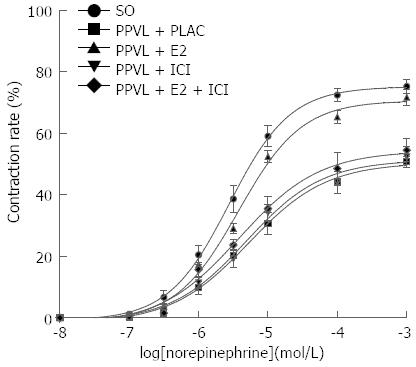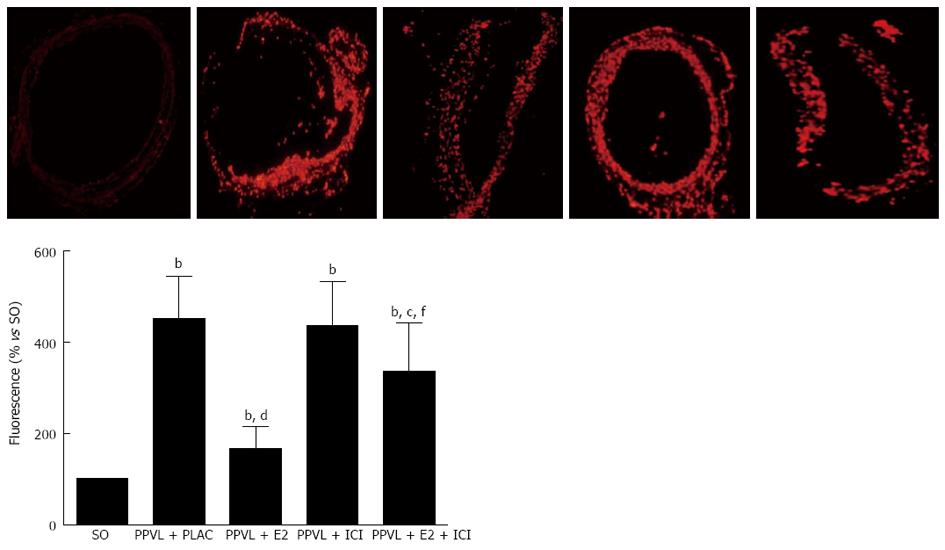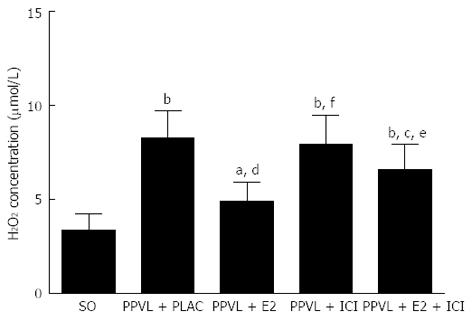Copyright
©2013 Baishideng Publishing Group Co.
World J Gastroenterol. Oct 28, 2013; 19(40): 6863-6868
Published online Oct 28, 2013. doi: 10.3748/wjg.v19.i40.6863
Published online Oct 28, 2013. doi: 10.3748/wjg.v19.i40.6863
Figure 1 Dose-response curves for isolated rat mesenteric arteriole contractility in response to norepinephrine at different concentrations.
The dose-response curves in the four partial portal vein ligation (PPVL) groups were lowered and shifted to the right compared to the sham operation (SO) group. Treatment with estrogen (E2) reversed the curve to left, whereas ICI182, 780 decreased the response to norepinephrine of arterioles treated with E2. PLAC: Placebo.
Figure 2 In situ detection of superoxide anion.
Fluorescence micrographs of superior mesenteric arteries stained with the O2•−-sensitive dye DHE (red fluorescence) were obtained from sham operation (SO) and partial portal vein ligation (PPVL) rats at 14 d after surgery. Images were acquired at identical settings. bP < 0.01 vs SO; cP < 0.05, dP < 0.01 vs PPVL + placobo (PLAC); fP < 0.01 vs PPVL + estrogen (E2).
Figure 3 Hydrogen peroxide determination.
The hydrogen peroxide concentrations of the superior mesenteric arteries were obtained from sham operation (SO) and partial portal vein ligation (PPVL) rats 14 d after surgery. aP < 0.05, bP < 0.01 vs SO; cP < 0.05, dP < 0.01 vs PPVL + placobo (PLAC); eP < 0.05, fP < 0.01 vs PPVL + estrogen (E2).
- Citation: Zhang B, Zhang CG, Zhou QB, Chen W, Wu ZY. Estrogen improves the hyperdynamic circulation and hyporeactivity of mesenteric arteries by alleviating oxidative stress in partial portal vein ligated rats. World J Gastroenterol 2013; 19(40): 6863-6868
- URL: https://www.wjgnet.com/1007-9327/full/v19/i40/6863.htm
- DOI: https://dx.doi.org/10.3748/wjg.v19.i40.6863











